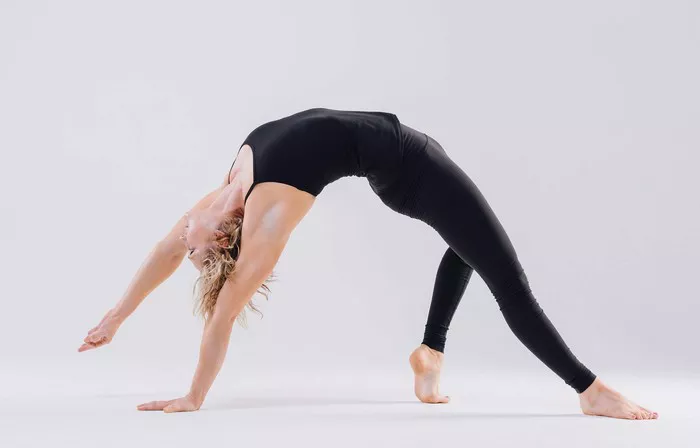Bouncing on a yoga ball, also known as a stability ball or exercise ball, is an increasingly popular activity for fitness enthusiasts. Not only does it provide a fun and dynamic way to exercise, but it also has various health benefits. One common question is: how many calories does bouncing on a yoga ball burn? This article delves into the science behind calorie burning, the factors affecting it, and how using a yoga ball can contribute to your overall fitness goals.
Understanding Calorie Burning
Calories are a unit of energy, and the number of calories burned during any activity depends on several factors, including body weight, intensity of the activity, and duration. The basal metabolic rate (BMR), which is the number of calories your body needs to maintain basic physiological functions at rest, also plays a significant role. Any physical activity above this baseline increases calorie expenditure.
See Also: Top 5 Hot Yoga Studios in Worcester, MA
Factors Affecting Calorie Burn
- Body Weight: Heavier individuals tend to burn more calories than lighter ones during the same activity because more energy is required to move a larger mass.
- Intensity: Higher intensity activities burn more calories. Vigorous bouncing will burn more calories than gentle bouncing.
- Duration: The longer you bounce, the more calories you will burn.
- Fitness Level: Fitter individuals may burn fewer calories at the same activity level compared to less fit individuals because their bodies are more efficient.
Calorie Burn Estimates
The calorie burn from bouncing on a yoga ball varies widely. According to research and fitness calculators, an average person weighing around 155 pounds can burn approximately 30 to 50 calories in 10 minutes of moderate bouncing. This can translate to about 180 to 300 calories per hour, depending on the intensity.
Health Benefits of Using a Yoga Ball
- Improved Balance and Coordination: Bouncing on a yoga ball engages the core muscles, which helps improve balance and coordination.
- Strengthening Core Muscles: The constant adjustment required to stay balanced on the ball strengthens the abdominal and back muscles.
- Enhanced Posture: Regular use of a yoga ball encourages better posture by engaging the stabilizing muscles of the spine.
- Increased Circulation: The gentle bouncing movement can enhance blood flow and reduce the risk of circulatory problems.
- Low-Impact Exercise: Bouncing on a yoga ball provides a low-impact workout, making it suitable for people with joint issues or those recovering from injuries.
How to Maximize Calorie Burn on a Yoga Ball
To get the most out of your yoga ball workout, consider the following tips:
- Vary the Intensity: Alternate between periods of gentle bouncing and more vigorous bouncing to keep your heart rate up.
- Incorporate Movements: Add arm movements, leg lifts, or other exercises to engage more muscle groups.
- Interval Training: Use interval training techniques by bouncing at a high intensity for a short period followed by a rest period.
- Combine with Other Exercises: Use the yoga ball as part of a larger workout routine that includes other exercises like squats, push-ups, or crunches.
Sample Yoga Ball Workout Routine
A well-rounded yoga ball workout routine can help maximize calorie burn and improve overall fitness. Here’s a sample 30-minute routine:
- Warm-Up (5 minutes): Gentle bouncing to get the blood flowing and muscles warmed up.
- Core Strengthening (10 minutes): Perform exercises like ball crunches, plank holds with hands on the ball, and seated leg lifts.
- Cardio Burst (5 minutes): Vigorous bouncing with arm movements, such as overhead presses or arm circles.
- Full-Body Movements (5 minutes): Incorporate exercises like squats with the ball, wall squats, and seated marches.
- Cool Down (5 minutes): Gentle bouncing and stretching to relax the muscles and improve flexibility.
Safety Tips
While bouncing on a yoga ball is generally safe, it’s important to follow some safety tips to prevent injury:
- Choose the Right Size Ball: Make sure the ball is the right size for your height. When sitting on the ball, your knees should be at a 90-degree angle.
- Check the Ball’s Condition: Ensure the ball is properly inflated and free of any damage.
- Use a Non-Slip Surface: Place the ball on a non-slip surface to prevent it from sliding during use.
- Maintain Good Form: Keep your back straight, engage your core, and avoid excessive bouncing that could lead to loss of balance.
Conclusion
Bouncing on a yoga ball is a fun and effective way to burn calories and improve overall fitness. While the exact number of calories burned can vary, incorporating a yoga ball into your exercise routine can offer numerous benefits, from strengthening core muscles to enhancing balance and posture. By varying the intensity and combining it with other exercises, you can maximize the calorie-burning potential of this versatile fitness tool. Always prioritize safety and enjoy the dynamic workout that a yoga ball can provide.
Related topics:

























